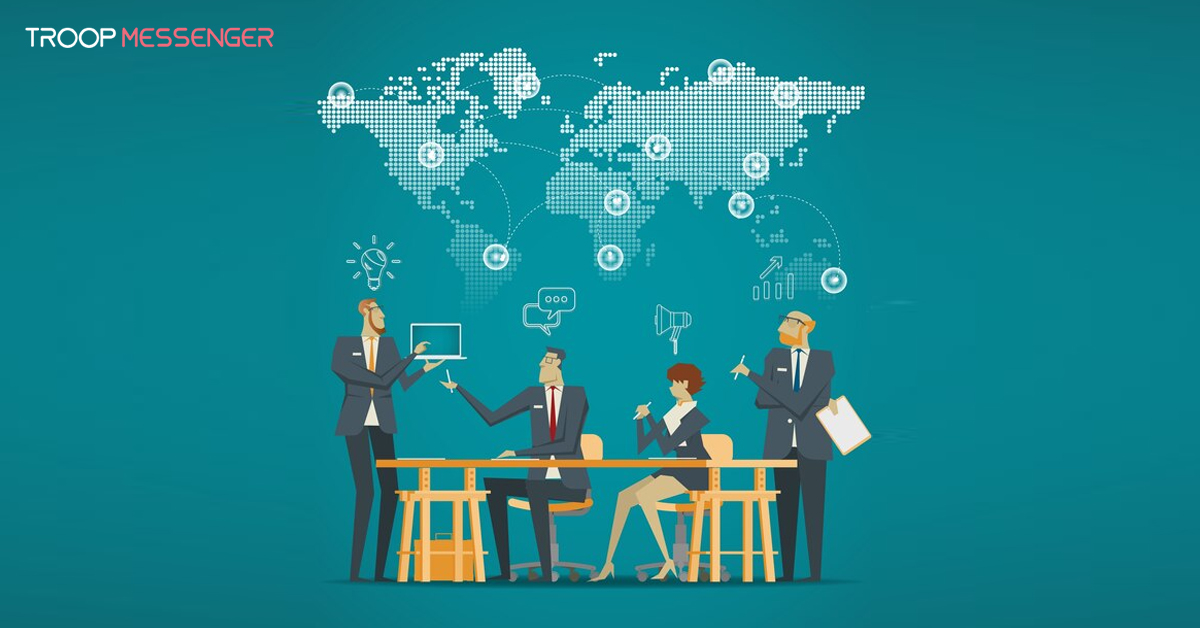Connect with us

How Technology Is Revolutionizing Communication In The Transportation Sector
There was a time when transportation technology focussed almost solely on speed. Bullet trains and Concorde airplanes were the high standards of travel innovation, and the notion that faster was better reigned supreme.
Nowadays, new goals are taking precedence in the transportation sector. Accessibility, sustainability, and efficiency are hot topics, while journey planning, tracking, safety, and security sit high on the priority list for both operators and consumers.
In short, transport has become much less about getting from A to B in the fastest possible time, and much more about creating safer, more streamlined, and connected experiences.
This shift means communication and transportation have become intrinsically linked, and this is where new tech is really making its mark. Vehicle digital signage, for example, plays a crucial role in providing real-time information to passengers, enhancing their overall experience while on the move.
In this article, we’re diving into the 4 communication technologies transforming the transportation sector. From AI, voice power, IoT, and more, we’re exploring how tech focussed on connectivity is changing the way we move.
Table of Contents
A word on AI
One of the most talked-about new-age technologies revolutionizing communication in the transportation sector is Artificial Intelligence (AI). It’s a trending topic for good reason - global AI in the transportation market has experienced remarkable growth, surging from $2.6 billion in 2022 to $3.1 billion in 2023 and it’s projected to reach $6.3 billion by 2027.
New emerging AI technologies in the US are also being developed to reduce the crime rate of parcel theft, a growing problem for many direct-to-consumer businesses and delivery operators, such as UPS. One example is DeliveryDefence, a company that takes an AI-powered approach to reducing the risk of delivery theft. They use historic data and machine learning algorithms to assign each location a “delivery confidence score,” which is rated on a one to 1,000 scale.
This score can provide an indication of the risk of package theft and apply recommended precautions, for example, hand-to-hand delivery or requiring a signature.
From drone taxis, and enhanced efficiencies in car transport to robotics and beyond, AI is a central piece of almost every new and emerging transportation solution. But, it's not just these wow-factor tech trends that are creating a big impact, more modest technologies appear to be playing as big a role in the evolution of transport.
These include:
- Voice Power
- Goods tracking / Internet of Things (IoT)
- AR and VR support
- Intelligent Transport Systems (ITS)
Voice Power
Voice power may seem like a bit of an old concept. We’ve all heard of Siri and Alexa by now, and often these examples aren’t as reliable as we’d like. However, industry tech offers a far more advanced, and much more impactful use of voice than your average home assistant.
Industry-focused voice-powered technologies combine voice and artificial intelligence to enable rapid access to information on the go. For instance, LOVO’s text-to-speech tech leans on AI to quickly convert written content into spoken content, which can be used for everything from content creation to accessibility improvement. The days of putting up with incredibly robotic or uncanny text-to-speech software are long gone, and the possibilities for the future are exciting.
Since voice is 5x faster than text input and notably more accurate than typing on a mobile device, it allows connection and communication in real-time.
This is particularly important when considering the complexities of transportation. Drivers have little time to stop and type out messages and comms, while a constantly changing environment calls for regular and reliable information delivered in real-time.
In addition to this, voice technologies remove the challenges that come with a diverse workforce or customer base. With a global library of languages and dialects at their disposal, voice tech can translate data or information to any user - therefore improving accessibility for all.
Goods tracking / Internet of Things (IoT)
IoT technology has been hailed as one of the most significant introductions to the transportation industry over recent years. This is largely due to the infinite number of ways they can be applied within business operations and customer communications. By 2027, Industrial IoT is expected to be a $525 billion market, with thousands of intelligent devices and products in operation.
IoT sensors are capable of collecting a broad range of data including:
- The number of passengers travelling
- Stress levels of drivers
- Vehicle performance
- And even temperatures within the vehicle
Additionally, IoT sensors can identify delays or incidents on the road generating real-time alerts to relevant staff or customers.
With this new level of data, businesses are able to adapt quickly and improve customer service, while enhancing processes and increasing the overall safety of drivers and passengers.
Tools like IoT sensors combined with AI are already in use across a multitude of industries including shipping, public transport, car transport, and parcel delivery to name a few.
The use of IoT, AI, and similar technologies results in increased efficiency for companies fulfilling a shipment, delivery, or move while saving customers time and money.
AR and VR Support
Moving forward, we can all expect to see Virtual Reality (VR) and Augmented Reality (AR) applications in transport and logistics businesses. One such application is in vehicle maintenance.
Offsite technicians will be able to assist drivers on the go via headsets that enable ‘face-to-face’ communication.
This instant access to repairs and support will reduce downtime in the event of breakdowns and provide an added layer of certainty for drivers and passengers alike.
AR and VR could also play a vital role when it comes to safety. For instance, AR can help prevent truck accidents on dangerous roads by enhancing a driver’s perception of the road ahead and safely delivering critically important real-world info within the driver’s line of sight.
Intelligent Transport Systems (ITS)
An intelligent transport system (ITS) is a technology used to improve transportation safety and efficiency. Using Information Communications Technologies (ICT) that collect and communicate information from the road, congestion is reduced and safety is enhanced.
ITS has been used in Australia for many years for things like e-tolling and active lane management. In fact, Australian companies are leaders in ITS developments (often in partnership with the Australian government).
EXAMPLE: Sydney Cooperative Adaptive Traffic System (SCATS) is an intelligent traffic control system designed to optimize traffic movement. Every hour, as thousands of people move through intersections, SCATS works behind the scenes to keep roads running as safely and efficiently as possible.
Developed by the NSW Government in Sydney, SCATS has installed infrastructure and created an algorithm to optimize traffic flow. This network is controlled by regional servers, which then feed into a centralized management system. By using real-time data, SCATS can improve traffic flow across intersections, a busy area, or an entire city.
The benefits of an ITS such as SCATS help reduce travel times, reduce emissions, and ensure the safety of all road users, all of which are fundamental when improving and developing cities. This technology has now been utilized in 187 cities across 28 countries and helps millions of people move seamlessly around cities.
Conclusion
Technologies that enable different modes of communication, such as voice, remote support, and journey tracking are set to significantly improve the collaboration and efficiency between workers, teams, and customers.
AI will continue to play a significant role in shaping the future of the transportation industry. It will be used as a tool and likely develop into entirely new technologies and opportunities.
As these enhanced communication streams are more widely implemented, we can expect to see optimized operations that respond more quickly than ever to the changing environment and the needs of customers alike.








